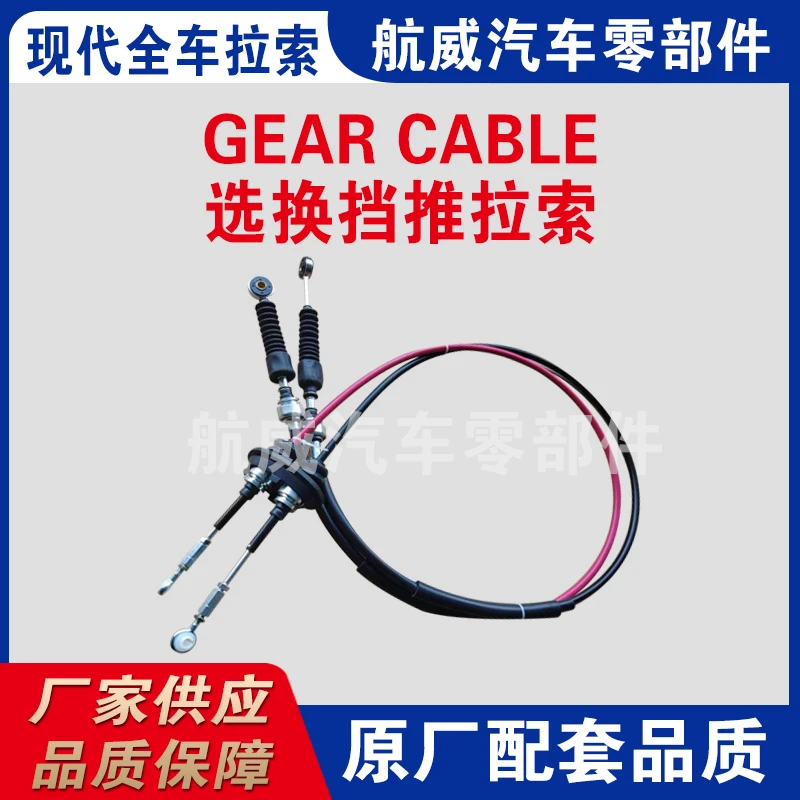Replacement Guide for Car Handbrake Cables and Maintenance Tips
Understanding the Importance of the Car Hand Brake Cable
The hand brake, often referred to as the parking brake or emergency brake, is a critical component of a vehicle’s braking system. Among the various parts that make up this essential system, the hand brake cable plays a vital role—it connects the hand brake lever to the brake mechanisms at the rear wheels. Understanding the function and maintenance of the hand brake cable can contribute significantly to vehicle safety and performance.
The Function of the Hand Brake Cable
When the hand brake lever is pulled, the hand brake cable engages the rear brakes, locking the wheels in place. This is especially crucial when parking on inclines or declines, as it prevents the vehicle from rolling away. In emergency situations, the hand brake can serve as an additional braking mechanism. This is particularly valuable when the main brake system fails, allowing the driver to bring the vehicle to a halt safely.
Components of the Hand Brake System
The hand brake system consists of several components, including the hand brake lever, the cable, and the brake shoes or pads. The cable is typically made of durable steel to withstand the tension exerted when engaged. It runs from the lever under the dashboard to the rear brakes, where it connects to mechanisms that enable the brake shoes or pads to grip the brake drum or rotor. Proper functioning of each component is essential for the hand brake system to work efficiently.
Signs of a Faulty Hand Brake Cable
Over time, the hand brake cable may suffer from wear and tear due to constant use and exposure to elements. Some common signs of a faulty hand brake cable include
1. Slippage If the hand brake does not hold the vehicle in place, or if it feels like it is slipping when engaged, it may indicate a problem with the cable. 2. Difficulty Engaging If the hand brake lever feels stiff or unresponsive, it could mean that the cable is corroded or frayed.
3. Excessive Play in the Lever If there is too much movement in the hand brake lever before it engages the brakes, it may suggest that the cable has stretched or is damaged.
car hand brake cable

Maintenance Tips for the Hand Brake Cable
To ensure the longevity and proper functioning of the hand brake cable, it's essential to perform regular maintenance
1. Routine Inspections Regularly check the condition of the hand brake cable and its housing. Look for signs of damage or wear, especially after harsh weather conditions.
2. Adjustments If you notice issues with engagement, the cable may need to be adjusted for optimal tension.
3. Lubrication Periodically lubricate the cable to reduce friction and prevent rust. This can be particularly helpful in areas with high humidity or frequent rainfall.
4. Professional Servicing If you suspect any issues beyond simple maintenance, don’t hesitate to seek professional help. Mechanics can provide thorough inspections and ensure that the entire hand brake system is functioning correctly.
Conclusion
Understanding the importance of the car hand brake cable is crucial for every vehicle owner. Proper maintenance not only enhances the performance of the parking brake but also adds a layer of safety for both the driver and others on the road. By being aware of the signs of wear and tear and taking proactive measures to maintain this crucial component, you can ensure that your hand brake operates effectively, providing peace of mind every time you park your vehicle.
-
Workings of Clutch Pipe and Hose SystemsNewsJun.04,2025
-
The Inner Workings of Hand Brake Cable SystemsNewsJun.04,2025
-
The Secrets of Throttle and Accelerator CablesNewsJun.04,2025
-
The Hidden Lifeline of Your Transmission Gear Shift CablesNewsJun.04,2025
-
Demystifying Gear Cables and Shift LinkagesNewsJun.04,2025
-
Decoding Clutch Line Systems A Comprehensive GuideNewsJun.04,2025
